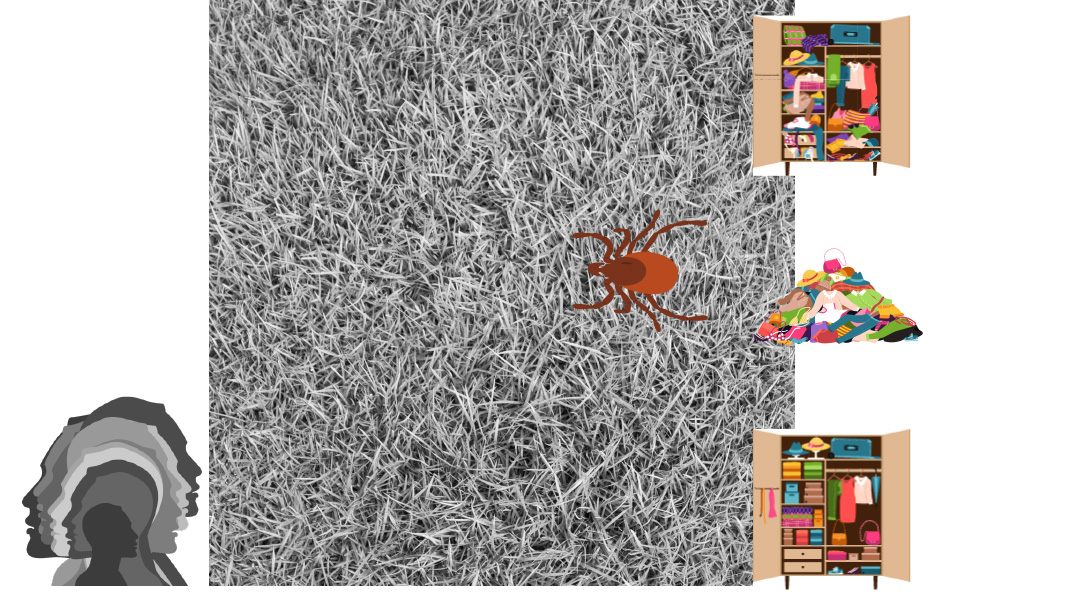Lyme Disease
| September 24, 2024Lyme disease is an infection caused by bacteria spread through certain types of tick bites

Lyme Disease
Dr. Jennie Berkovich
When I was doing my training in Florida, Lyme Disease was an unusual diagnosis. This tick-borne illness isn’t common in the Southeast, so it wasn’t until I started practicing in the Midwest that I really started learning about the spectrum and nuances of Lyme. It’s a topic with a tremendous amount of misinformation and worthwhile to address. Lyme disease is an infection caused by bacteria spread through certain types of tick bites. It’s most common in the northeastern, mid-Atlantic, and north-central United States. The percentage of ticks infected with Lyme disease bacteria varies greatly, ranging from less than one percent to over 50 percent, depending on the area and life stage of the tick.
The symptoms of Lyme disease can vary:
Early Stage (3–30 days after tick bite):
A bull’s-eye rash
Fever
Chills
Headache
Tiredness
Muscle and joint aches
Later Stages (days to months after tick bite):
Severe headaches
Additional rashes
Facial paralysis
Joint pain and swelling
Heart problems
Dizziness
Nerve pain
When to Test for Lyme Disease
Not every tick bite leads to Lyme disease. We usually test for Lyme if:
There is a bull’s-eye rash.
There are symptoms AND the patient has been in an area where Lyme disease is possible.
Types of Tests
There are two main blood tests for Lyme disease:
ELISA test: This is usually done first.
Western blot test: This is done to confirm a positive ELISA test.
Both tests look for antibodies your body makes to fight Lyme bacteria. Unfortunately, these tests often have false positives. This means the test says you have Lyme disease when you don’t. The tests look for antibodies your body makes to fight Lyme bacteria. Sometimes these antibodies can be from a past Lyme infection that your body already fought off. The test might mistake antibodies that fight other bacteria or diseases for Lyme antibodies. Some people may have antibodies without ever getting sick from Lyme disease.
In areas where Lyme disease isn’t common, up to 80 percent of positive test results can be false positives. A positive test result doesn’t always mean you have Lyme disease and should always be coupled with clinical signs and symptoms before initiating treatment.
Treatment Options
The good news is that Lyme disease can be treated with antibiotics. The type and length of treatment depend on the stage of the disease:
For early Lyme disease, we usually use oral antibiotics for 10–14 days.
For later stages, we might use IV antibiotics for 14–28 days.
There are many misconceptions about Lyme disease, and it popularly gets diagnosed and treated unnecessarily. The risk of interpreting blood tests incorrectly and taking unnecessary antibiotics should not be minimized. In addition, symptoms incorrectly attributed to Lyme can lead to overlooking the correct diagnosis.
We always want answers when a child is feeling unwell. However, Lyme should only be tested for and treated when there are clear indications.
Dr. Jennie Berkovich is a board-certified pediatrician in Chicago and serves as the Director of Education for the Jewish Orthodox Medical Association (JOWMA)
Three Categories of Cleaning Up
Hadassah Evenstur
R
ivky decides to take on a project to reorganize her spice rack, even as her laundry is piling up. Esti enters her living room and is overwhelmed by the mess — she doesn’t know where to start. Yocheved spends four hours researching organizational bins while the clutter in her home is untouched.
Many women with ADHD find themselves in a state of paralysis or make poor decisions about time management when attempting to tackle clutter and mess. How can they begin to approach this more effectively?
The first step is to divide the task of tackling the mess into three categories: resetting, organizing, and detailed project. When we reset, we need to achieve the greatest effect in the shortest amount of time. This is appropriate to employ when expecting company in an hour or when the kitchen needs to be straightened up so it can be functional for the next day.
The second category is organizing. This involves creating homes for items that don’t yet have a designated place and getting rid of items no longer needed. This is appropriate only when you’ve got your home to a functional state at the resetting level.
The third category is called detailed project. At this level, the person is hyper-focused on small details, like organizing the bookcase by color and height of the books. The general rule for people with ADHD is to steer clear of this detailed focusing, as they often use it as an escape from more undesirable tasks.
When you’re overwhelmed by the mess, begin by clarifying the appropriate goal. In general, resetting the space takes priority over organizing. Avoid mixing these three categories, as that will lead you down a rabbit hole of confusion and paralysis.
Hadassah Eventsur, MS,OTR/L is an occupational therapist and a certified life coach in the Baltimore area. She is the founder of MindfullyYou, a program that supports frum women who struggle with executive functioning
Hashkafic Mismatch
Sarah Rivkah Kohn
Many in the frum world remember just a short while ago when therapy meant going into a secular, often antireligious environment and seeing someone who espoused anti-Torah views.
Naturally, going to therapy was seen as a very last resort because of the inherent and very real risk involved on a soul level.
Today, with the influx of frum clinicians in many communities, a lot of those issues are irrelevant.
However, we have a new monster in the room called cultural assumptions.
We may find that our biases and assumptions about frum communities outside of our own play a role in treatment.
Clients should feel respected for whatever their derech is, and good clinicians should be forever checking in with themselves (or a supervisor) to ensure they don’t project their thoughts and ideas about another group.
Clinicians should spend time learning about norms around dating, shanah rishonah, technology use, etc., in the communities of the clients they serve so that they are equipped to understand what is normal and what isn’t and help their clients through their struggle.
If at any point a client feels their hashkafic view is being challenged by a frum clinician, they should bring it up. Oftentimes it’s an innocent mistake, when a question was simply to clarify, not to cast doubt. However, if any clinician can’t respect your values, the relationship isn’t going to work, not just hashkafically, but also therapeutically.
Sarah Rivkah Kohn is the founder and director of Links Family, an organization servicing children and teens who lost a parent.
(Originally featured in Family First, Issue 912)
Oops! We could not locate your form.







